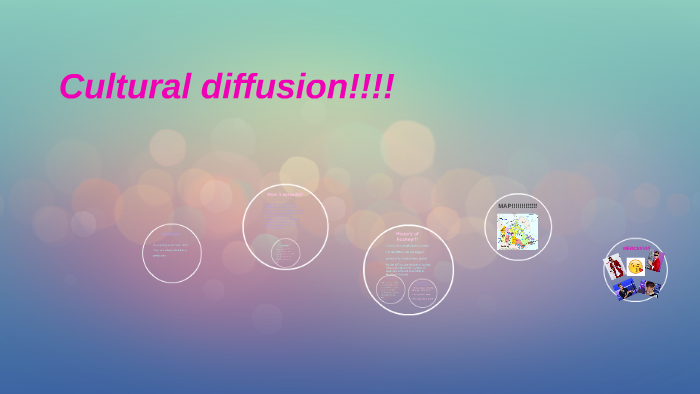Cultural diffusion is a term that encapsulates the exchange of cultural elements—such as traditions, values, artifacts, and technologies—between different societies. This process of sharing and adopting cultural traits is as old as humankind itself, spanning continents and epochs. While cultural diffusion can be a complex phenomenon, it can also be illustrated in simple yet evocative images. One easy way to visualize cultural diffusion is through the concept of a “cultural mosaic,” depicting how diverse cultural elements intermingle to create rich, multifaceted societies. Several visual elements can effectively convey this idea.
To begin with, one can paint an image of a globe, highlighting various continents. Each continent can be illustrated with iconic symbols representing distinct cultures. For instance, North America might feature a cowboy hat to symbolize Western culture, while Asia could be adorned with a dragon, representing Chinese traditions. This global depiction serves as a foundation for understanding how cultures intersect on a worldwide scale.
Next, introducing arrows or lines that connect these symbols can enhance the visual representation. These arrows represent the movement of cultural traits across borders. For example, drawing an arrow from Asia to Africa could symbolize how Asian cuisine has influenced African cooking methods or flavors. This element of movement signifies not only the physical exchange of people but also the flow of ideas and practices that accompany them. It emphasizes that cultures are not isolated; rather, they influence each other, leading to innovations and adaptations.
Additionally, visualizing cultural diffusion can involve representing different art styles converging in one frame. For instance, in one corner, you might depict an African tribal mask, while in another, a traditional Japanese tea set is showcased. In the central area, these two artifacts can be intertwined with elements reflective of modern pop culture. For example, illustrating a young person wearing a mix of Western and traditional clothing—perhaps jeans paired with a kimono—can capture the essence of cultural blending. This illustration illustrates how cultural diffusion breeds novel identities and expressions.
Considering music as a vital component of cultural diffusion, a visual representation could incorporate musical notes swirling around the globe. The notes can be adorned with flags representing various countries. This would signify how different musical genres have influenced each other. The intertwining of reggae, hip-hop, flamenco, and K-pop, among others, showcases the global tapestry of musical culture, created through cultural exchange.
Within the realm of culture, language serves as another avenue of diffusion. A captivating image might showcase speech bubbles, each containing words or phrases from different languages, hovering over diverse characters from various cultural backgrounds who are engaged in conversation. This portrayal reinforces the idea that as people converse and share ideas, language naturally evolves, bringing new terminologies and expressions into being.
Food, one of the most potent reflections of cultural diffusion, can also be vividly illustrated. A vibrant depiction of a multicultural feast—where sushi, tacos, pasta, and curry are served together—symbolizes the harmonious coexistence of diverse culinary traditions. Surrounding this banquet, individuals from distinct cultural backgrounds joyously participate, sharing dishes and stories. This image vividly encapsulates the idea of cultural appreciation and mutual respect found within the process of diffusion.
Another illustrative representation of cultural diffusion could involve showcasing technology’s role in facilitating this exchange. A simple image of a smartphone or computer surrounded by various cultural symbols—like a Greek vase, an American flag, and an Indian elephant—can underscore the modern methods through which cultural elements are shared and adopted. The digital landscape has accelerated the diffusion process, allowing for instantaneous sharing of ideas, art, and practices across the globe.
Moreover, portraying historical figures who contributed significantly to cultural diffusion can provide depth to the illustration. The inclusion of figures such as Marco Polo, who famously traveled from Europe to Asia, can be depicted alongside an image of an ancient trade route. This connection highlights how exploration and trade have always played a crucial role in spreading cultural traits throughout history.
To further illustrate the historical context of cultural diffusion, one could depict significant historical events where diffusion occurred, like the Silk Road or the Columbian Exchange. A map illustrating these routes, dotted with trade items such as spices, textiles, and technologies, highlights the interconnectedness of civilizations. This representation can serve as a reminder of how trade not only altered economies but also shaped cultural landscapes.
As the images of cultural diffusion convey stories of connection and interplay among disparate cultures, it is crucial to recognize the challenges that accompany this process. Cultural appropriation, misunderstandings, and tensions arise when cultural exchange is not conducted with care and respect. Therefore, including cautionary illustrations, such as a person encountering multiple cultural icons, can emphasize the importance of sensitivity and understanding in such exchanges.
In conclusion, illustrating the concept of cultural diffusion need not be a convoluted endeavor. Through various visual elements like globes, arrows, art styles, music notes, and food, one can effectively convey the richness of this shared human experience. By exploring how cultural elements blend and interact, we gain a clearer understanding of our interconnected world—a world that thrives on the exchange and appreciation of diverse cultures. The imagery we create can be both enlightening and evocative, fostering awareness and respect for the global tapestry woven through cultural diffusion.
